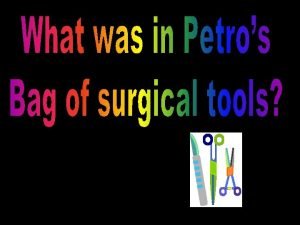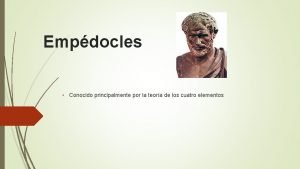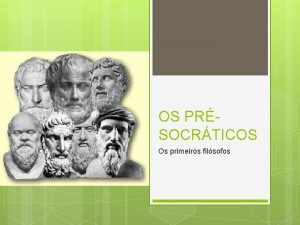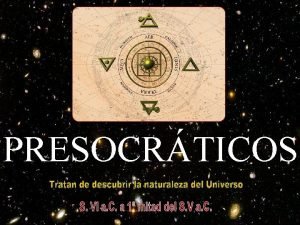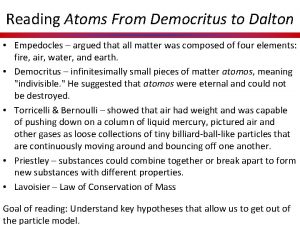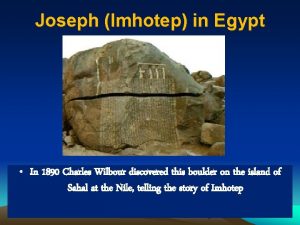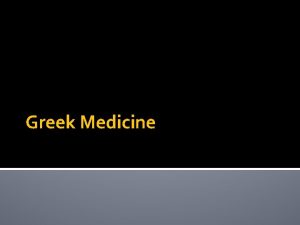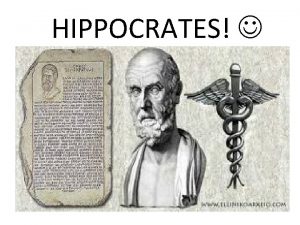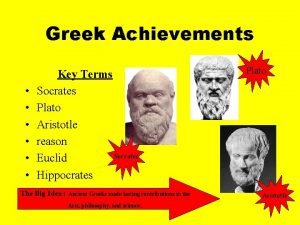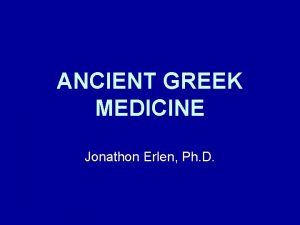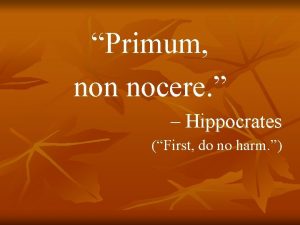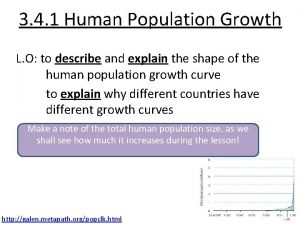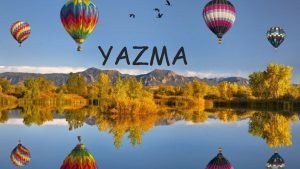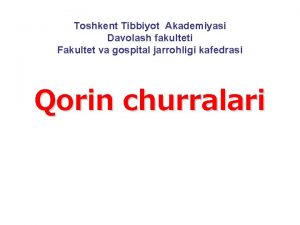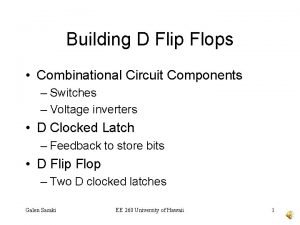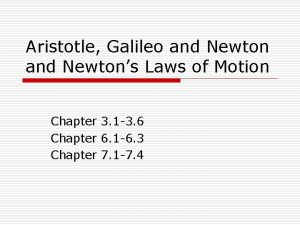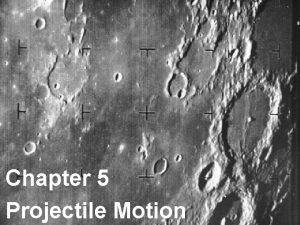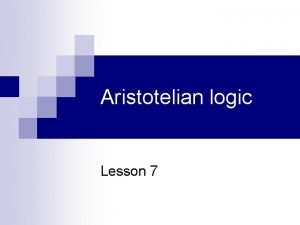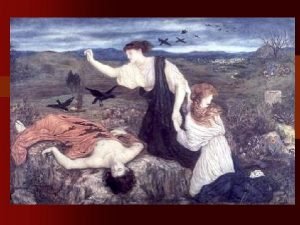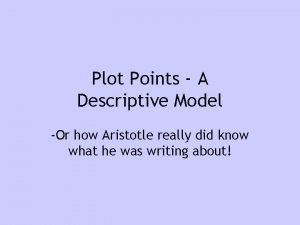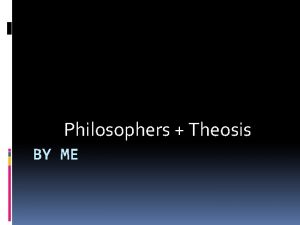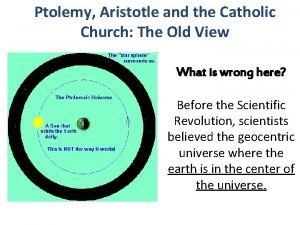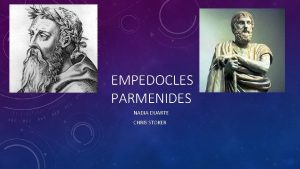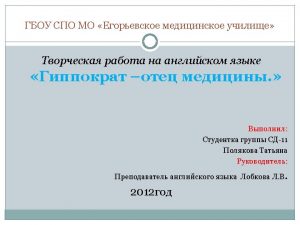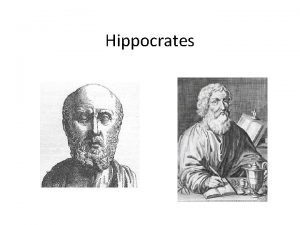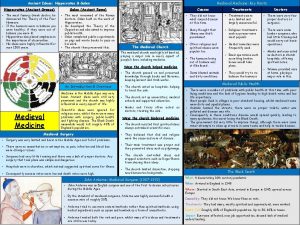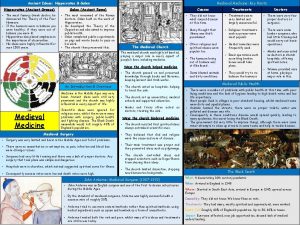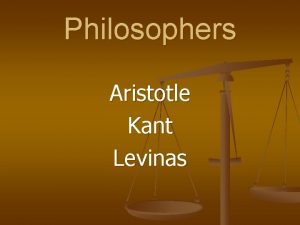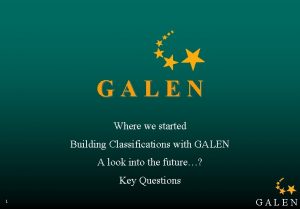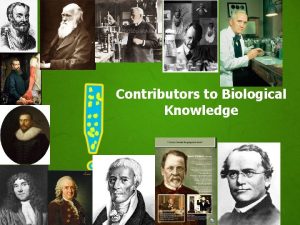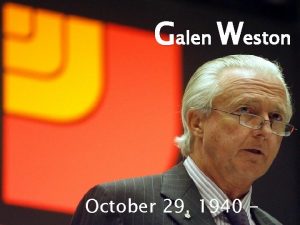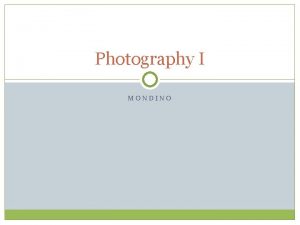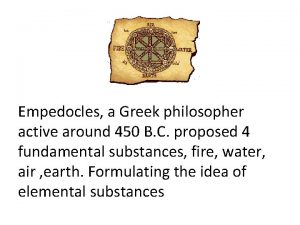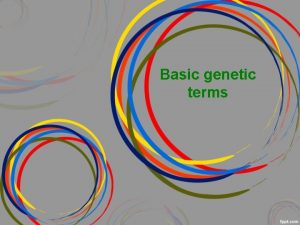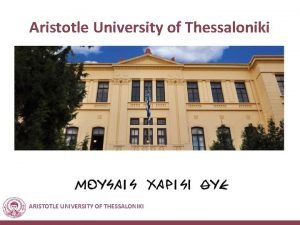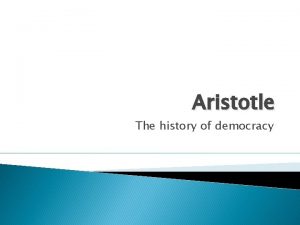Mondino Empedocles Hippocrates Aristotle Herophilus Erasistratus Galen Imhotep



































- Slides: 35

Mondino Empedocles Hippocrates Aristotle Herophilus Erasistratus Galen Imhotep Anatomical Time Line

Chronology of Galen’s Life 129 144 – 152 157 168 169 200 Russel Crowe in Gladiator Born near Pergamon Studied anatomy in Pergamon, Smyrna, Alexandria Appointed physician to the gladiators in Pergamon Appointed physician to Marcus Aurelius Appointed Physician to Commodus Died in Pergamon

Galen of Pergamon (129 - 200 C. E. ) Greatest influence on medicine for 1400 years Prolific writer Over 500 articles (83 exist today) De anatomicis administrationibus a dissection manual De usu Partium On the Use of the Parts of the Body Summarized the medical knowledge before his time

Galen of Pergamon (129 - 200 C. E. ) Greatest influence on medicine for 1400 years Performed many experiments Arteries contain blood and not air Function of recurrent laryngeal nerve to control vocal cords Knowledge of anatomy from wounds of gladiators, dogs, pigs, sheep, monkeys

Translation of Galen Baghdad, 9 th century *

Avicenna (Ibn Sina) of Persia (980 -1037 C. E. ) Philosopher and physician Author of over 200 books

Avicenna’s Canon One of the most influential medical textbooks ever written Helped preserve writings of early medical texts Used in European medical training for over 500 years 1052 1489 1597

Medieval Medical Centers Padua – 13 th c. Bologna – 11 th c. Salerno – 10 th c.

Anatomical Revolution • Forensic purposes --First recorded case in Italy, 1286, disease in hens and humans -- causes of death, by 1300. • Religious purposes: -- saints bodies had signs of god. • Educational purposes: -- What is the human norm? ? By mid- 1300 s, it became compulsory for med students in U. of Padua and Florence to have observed dissections.

Mondino de Luzzi (1270 -1326) “Restorer of Anatomy” Introduced public dissections of human cadavers in Bologna – 1316 Wrote Anathomia corporis humani – 1316 (now known as Mondino’s Anatomy) practical manual of dissection based on Galenic writings and Mondino’s dissections principle book on anatomy for 200 years

Dissection: Teaching from the Book Johannes de Ketham Fasciculo di medicina (1493)

Mondino de Luzzi (1270 -1326) What Mondino got wrong Five lobed liver (although Mondino said “these five lobes are not always parted”) Uterus divided into seven cells Presence of veins connecting uterus to breast to convert menstrual blood into milk Rete mirabile at base of brain Heart had three ventricles (after Aristotle)

Mondino de Luzzi (1270 -1326) Mondino named many structures, e. g. , parts of the small bowel Ileum “located at the site near the iliac bone” Jejunum (L. empty) “you find it generally empty in healthy persons” Duodenum (following the name given by Herophilus) “its length is twelve fingers in the majority of cases”

Artists Who Anatomized Leonardo da Vinci (1452 -1519) Albrecht Dürer (1471 -1528) Michelangelo (1475 -1564) Raphael (1483 -1521)

Da Vinci: Mona Lisa

Leonardo Da Vinci: the Last Supper

Leonardo da Vinci (1452 -1519)


Vitruvian Man

(picture reversed) Michelangelo (1475 -1564)

(picture reversed) Michelangelo (1475 -1564)

Five Picture Series (c. 1400) bones, nerves, muscles, veins, and arteries

Five Picture Series (c. 1400) bones, nerves, muscles, veins, and arteries

Anatomy theaters University of London 1557 U of Padua in 1594 U of Bologna in 1595 U of Paris in 1617 Oxford in 1623

Dissecting Theater (1637) Archiginnasio – Bologna

The Fabrica, title page

Surgical instruments used by Vesalius

Cadaver of an executed person

Skeleton contemplates mortality

The “Muscle Man”

The Muscle Man (posterior)

Anatomy of the jaw

The Inside of the Brain

Ambriose Pare

Galen’s view of blood circulation
 Herophilus greek mythology
Herophilus greek mythology Empedocles evolucion
Empedocles evolucion Arje de empedocles
Arje de empedocles Filsofos
Filsofos Arje de empedocles
Arje de empedocles Democritus and dalton
Democritus and dalton Imhotep and joseph
Imhotep and joseph Greek medicine contributions
Greek medicine contributions Sumpah hippocrates
Sumpah hippocrates Historical healthcare figures
Historical healthcare figures When was hippocrates born
When was hippocrates born Hippocrates
Hippocrates Key terms of socrates
Key terms of socrates Hippocrates of cos
Hippocrates of cos Lời thề hippocrates
Lời thề hippocrates Hippocrates asthma
Hippocrates asthma Primum non nocere hippocrates
Primum non nocere hippocrates Galen.metapath.org/popclk.html
Galen.metapath.org/popclk.html Galen carol audio
Galen carol audio Kardinal von galen schule olsberg
Kardinal von galen schule olsberg Hayes yazma modeli
Hayes yazma modeli Galen rowell death
Galen rowell death Galen dashboard
Galen dashboard Churra
Churra Galen ideas
Galen ideas Flopload
Flopload Galen.metapath
Galen.metapath Aristotle laws of motion
Aristotle laws of motion Chapter 5 projectile motion
Chapter 5 projectile motion Plato and aristotle venn diagram
Plato and aristotle venn diagram Aristotle tragic hero
Aristotle tragic hero Orchestra greek theatre definition
Orchestra greek theatre definition Aristotle bees
Aristotle bees Aristotle plot diagram
Aristotle plot diagram Aristotle on god
Aristotle on god Aristotle catholic church
Aristotle catholic church
